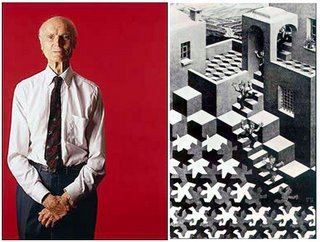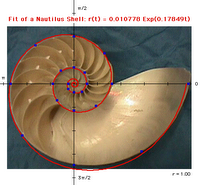The man who saved geometry

Why would mathematicians declare geometry irrelevant and propose replacing it with algebra? After all didn't Plato reportedly proclaim that "God geomtrizes"? And didn't Buckminster Fuller demonstrate that geometry provides the keys to understanding Nature's design strategy for optimizing energy to achieve maximum sustainable life support?
I realize that this is a stretch for most people, but I think this is more than an academic question. Geometry is a powerful tool. It is also arguably the most "user-friendly" math, providing the general public with a window into the inner workings of Nature (see my post on Buckminster Fuller's "Synergetics").
Fuller dedicated "Synergetics" to Coexter:
H. S. M. COXETER
PROFESSOR OF MATHEMATICS
UNIVERSITY OF TORONTO
To me no experience of childhood so reinforced self-
confidence in one's own exploratory faculties
as did geometry. Its inspiring effectiveness in
winnowing out and evaluating a plurality
of previously unknowns from a few given
knowns, and its elegance of proof
lead to the further discovery and comprehension of a
grand strategy for all
problem solving.
By virtue of his extraordinary life's work in mathematics,
Dr. Coxeter is the geometer of our bestirring
twentieth century, the spontaneously acclaimed
terrestrial curator of the historical
inventory of the science of
pattern analysis.
I dedicate this work with particular esteem for him
and in thanks to all the geometers of all time
whose importance to humanity
he epitomizes."
Whether we acknowledge it or not, geometry rules. (GW)
FOR A LOT OF PEOPLE, talk of geometry induces flashbacks to high school math class anxieties-fumbling with compasses and protractors and memorizing triangle theorems. So the idea that geometry was once on the brink of extinction as an academic subject does not elicit much regret or nostalgia.
We owe a lot to geometry, however. Geometric algorithms generate the aerodynamic curves of Mercedes-Benz sedans and Boeing aircraft, make possible computer-animated films such as Pixar's "The Incredibles," and power the data-mining technology used by Amazon.com to find patterns in massive amounts of raw information. Geometry governs in things small (the molecular structure of pharmaceuticals) and large (the shape of our universe).
Yet despite these modern applications, geometry was, for much of the 20th century, a discipline very much in jeopardy. It was deemed by a generation of mathematicians to be old-fashioned, a fine recreation for idling away a lazy afternoon, but in essence little more than a trivial tinkering with toys. Modern mathematics was all about prickly algebraic symbols and undulating equations-impenetrable hieroglyphs with no diagrams, no shapes.
The task of fending off these attacks fell to H.S.M. "Donald" Coxeter, the greatest classical geometer of the last century. Through his lifelong work as geometry's apostle, Coxeter, who died in 2003 at 96 (prematurely by his measure-his lifelong vegetarianism guaranteed he should live to 100, he figured), became known by his followers around the world as "the man who saved geometry" in a mathematical era characterized by all things algebraic, abstract, and austere.
Fifty years ago this summer, Coxeter was summoned by the Mathematical Association of America on a roving lecture tour through the United States. He traveled as far north as Fairbanks, Alaska, as far west as Stanford, Calif., and east to New York City, speaking with a missionary's zeal to schoolteachers and any other willing listeners.
Coxeter lectured about "the beauteous properties of triangles," about circles and spheres, and about the Platonic solids: the tetrahedron, cube, octahedron, icosahedron, and dodecahedron. According to a recent cosmological hypothesis (and a similar theory put forth by Plato) the dodecahedron is a potential model for the shape of the universe-bound by 12 walls, each the shape of a pentagon.
Coxeter had a special affection for the Platonic solids. Educated at Cambridge, in his native England, he spent most of his professional life at the University of Toronto. But before coming to Toronto he did a two-year stint at Princeton. It was there that he launched his career, choosing as his specialty polytopes, an extension of the Platonic solids in higher dimensions.
But just as Coxeter set out upon his career, classical geometry-with its emphasis on shapes and diagrams-was being supplanted by modern mathematicians' penchant for algebra.
A secret society of the créme de la créme of French mathematicians epitomized the shift in the mathematical zeitgeist of the early 20th century. Writing under the pseudonym Nicolas Bourbakis, the collective set out in the 1930s to rewrite the history of mathematics in one grand mathematical treatise, and perhaps the most distinctive feature of their work was the absence of diagrams.
The Bourbakis espoused mathematical rationality and rigor. They believed the subjective and fallible visual sense was easily led astray, falling victim to impressionistic reasoning. In 1959, at a conference in France addressing the need to overhaul the French education system, Jean Dieudonné, a founding member of the Bourbakis and the group's scribe, infamously proclaimed: "Down with Euclid! Death to Triangles!"
Eventually, the Bourbakis way of mathematics pervaded the Western world, reaching even into grade schools with the Sputnik-motivated New Math reforms of the 1960s, which aimed to improve students' performance and to ensure America was not left in the scientific dust by the Soviet Union. Instead of shapes, children studied axioms and set theory.
As a consequence, mathematical and scientific investigation suffered from what Walter Whiteley, a great admirer of Coxeter and director of applied mathematics at York University in Toronto, calls the "geometry gap." Whiteley's thesis holds that when the areas of the brain that process visual and geometric concepts fall into disuse, the realms of mathematics and science suffer as well.
So Coxeter set out to make the case for the visual geometric approach, using a number of tactics.
On a popular level, he proselytized for the classical geometric treasures he loved, praising their simple beauty and symmetry. The elegance of his talks and essays gained him an avid following around the world, a fan base of professional and amateur geometers alike who became just as passionate about classical geometry as he was.
Coxeter, for example, was muse to artist M.C. Escher, famous for works like "Ascending and Descending," a seemingly precarious building of stairs winding in an infinite loop. Coxeter and Escher became friends in the 1950s, and the mathematician's work assisted the artist in his quest to convincingly capture the concept of infinity. (Escher was known to say, "I'm Coxetering today!") It was a unique collaboration, since Escher, who had no mathematical background, drew entirely from Coxeter's geometric diagrams for inspiration, referring to the accompanying equations as Coxeter's "hocus-pocus math."
But Coxeter did more than just popularize. He also managed to reinvigorate the discipline through his academic research. He injected a modern relevance, allowing classical geometry to transcend its old-fashioned origins and find far-reaching applications in both mathematics and the sciences.
Specifically, Coxeter classified the symmetries of polytopes, which allowed him to translate these geometric entities into algebra, thus building a powerful bridge between algebra and geometry.
Coxeter also invented mathematical tools-now called Coxeter groups, Coxeter numbers, and Coxeter diagrams-which shed new light on symmetry, broadening and deepening its study. His best-selling book, "Regular Polytopes," became a classic. "It's like the bible for me. I refer to it all the time," said John Ratcliffe from Vanderbilt University in Nashville, who has one copy at work and another in his study at home for late-night consultations.
Symmetry underpins all mathematics-an equation being an expression of perfect balance. And it's present throughout nature as well-everything from the smallest spec of a subatomic particle, to a sunflower, to the shape of the universe and the hypothetical parallel universes that mirror our own exhibits symmetry. Applications of Coxeter's work pop up in just about any niche of mathematics or science that explores patterns and symmetry. In fact, Coxeter groups are being used in conjunction with Einstein's equations in the search for supersymmetry, which holds promise to unravel the puzzle of string theory.
The visual and the algebraic perspectives are in constant flux in the mathematical and scientific disciplines. "The battle between geometry and algebra is like the battle between the sexes," said Sir Michael Atiyah, honorary professor of mathematics at Edinburgh University. ``It's the kind of problem that never disappears. It'll never be dead, and it will never get solved. The question is, `What is the right balance?"'
"It goes back and forth, and not in an accidental way," said Peter Galison, professor of the history of science and physics at Harvard. "Pushing hard on the visual methods ends up pushing toward the antivisual. Beliefs swing between an almost theological dogma that images are stepping stones to higher knowledge, or that they are deceptive idols that keep us from higher understanding."
Coxeter's legacy is the powerful push he gave the visual geometric method, and the resulting change in perspective that transformed the way mathematicians and scientists create and investigate. "Coxeter's perspective and ideas are in the air we breathe," said Ravi Vakil, at Stanford. "It's not that his ideas are used to solve problems, it's that the fundamental problems grow out of his ideas. He's the soil."
Siobhan Roberts, a freelance writer living in Toronto, is author of "King of Infinite Space: Donald Coexter, the Man who Saved Geometry," published this month by Walker and Co.

0 Comments:
Post a Comment
<< Home